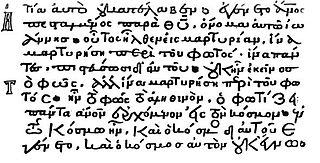 W
WA New Testament minuscule is a copy of a portion of the New Testament written in a small, cursive Greek script. Most of the minuscules are still written on parchment. Paper was used since the 12th century.
 W
WCodex Basilensis A. N. IV. 2, Minuscule 1, δ 254 and formerly designated by 1eap to distinguish it from minuscule 1rK is a Greek minuscule manuscript of the New Testament, usually dated palaeographically to the 12th century AD. It is written on 297 parchment leaves and contains the entire New Testament except the Book of Revelation.
 W
WCodex Basiliensis A. N. IV. 1, known as Minuscule 2, ε 1214, is a Greek minuscule manuscript of the New Testament, dated palaeographically to the 11th or 12th century. It was used by Erasmus in his edition of Greek text of the New Testament and became the basis for the Textus Receptus in the Gospels. The manuscript has complex contents.
 W
WMinuscule 13, ε 368 (Soden), is a Greek minuscule manuscript of the New Testament, on a parchment, dated to the 13th century. The manuscript is lacunose. The text of the manuscript is important for the textual critic. It has marginalia and was adapted for liturgical use.
 W
WMinuscule 17, ε 525 (Soden). It is a Greek-Latin minuscule manuscript of the New Testament, on 354 parchment leaves, dated palaeographically to the 15th century. It has some marginalia.
 W
WMinuscule 33, δ 48 (Soden), before the French Revolution was called Codex Colbertinus 2844. It is a Greek minuscule manuscript of the New Testament on parchment, dated palaeographically to the 9th century. The manuscript is lacunose. It has marginalia. According to the textual critics it is one of the best minuscule manuscripts of the New Testament.
 W
WMinuscule 35, δ309, is a Greek minuscule manuscript of the New Testament, written on 328 parchment leaves. Paleographically it has been assigned to the 11th century. The manuscript has complex contents, marginalia, and many corrections.
 W
WMinuscule 45, ε 442, is a Greek minuscule manuscript of the New Testament, on parchment leaves. Palaeographically it has been assigned to the 13th century. It has complex contents and full marginalia.
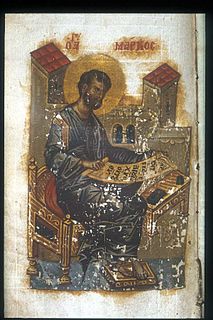 W
WMinuscule 46, ε 1285, is a Greek minuscule manuscript of the New Testament, on parchment leaves. Paleographically it has been assigned to the 13th century. It has complex contents and full marginalia.
 W
WMinuscule 57, δ 255, is a Greek minuscule manuscript of the New Testament, on parchment leaves. Palaeographically it has been assigned to the 12th century. The manuscript is lacunose. It has marginalia.
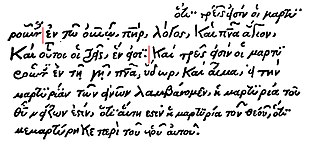 W
WCodex Montfortianus designated by 61, and known as Minuscule 61 is a Greek minuscule manuscript of the New Testament on paper. Erasmus named it Codex Britannicus. Its completion is dated on the basis of its textual affinities to no earlier than the second decade of the 16th century, though a 15th-century date is possible on palaeographic grounds. The manuscript is famous for including a unique version of the Comma Johanneum. It has marginalia.
 W
WMinuscule 65, ε 135, formerly known as Ussher 2, is a Greek minuscule manuscript of the New Testament, on parchment leaves. Palaeographically it has been assigned to the 11th century. The manuscript has complex contents including marginalia.
 W
WMinuscule 69, δ 505 (Soden), known as Codex Leicester, or Codex Leicestrensis, is a Greek minuscule manuscript of the New Testament on paper and parchment leaves. The manuscript palaeographically has been assigned to the 15th century. Some leaves of the codex were lost. The text-type is eclectic. It has been examined and collated by many palaeographers and textual critics. Although it is of late date, its text is remarkable from the point of view of textual critic. There are no marginalia. It is carelessly written with breathings and accents often given wrongly.
 W
WMinuscule 72, ε 110, is a Greek minuscule manuscript of the New Testament, on parchment leaves. Palaeographically it has been assigned to the 11th century. John Mill called it Codex Ephesinus. The manuscript has complex contents with full marginalia.
 W
WMinuscule 104, α 103 (Soden), is a Greek minuscule manuscript of the New Testament, on parchment leaves. Palaeographically it has been assigned to the 11th century.
 W
WCodex Ebnerianus, Minuscule 105, δ 257 (Soden), is a Greek language illuminated manuscript of the New Testament, though missing the Book of Revelation.
 W
WCodex Ebnerianus, Minuscule 105, δ 257 (Soden), is a Greek language illuminated manuscript of the New Testament, though missing the Book of Revelation.
 W
WMinuscule 113, ε 134 (Soden), is a Greek minuscule manuscript of the New Testament, on parchment leaves. Paleographically it has been assigned to the 11th-century.
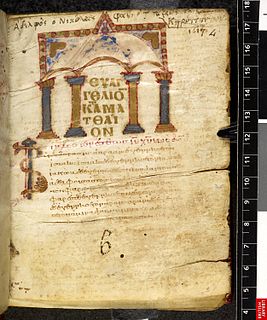 W
WMinuscule 114, ε 1018 (Soden), is a Greek minuscule manuscript of the New Testament, on parchment leaves. Palaeographically it has been assigned to the 11th century. It has marginalia.
 W
WMinuscule 116, ε 249 (Soden), is a Greek minuscule manuscript of the New Testament, on parchment leaves. Palaeographically it has been assigned to the 12th century. It has complex contents with some marginalia.
 W
WMinuscule 117, ε 506 (Soden), is a Greek minuscule manuscript of the New Testament, on paper leaves. Palaeographically it has been assigned to the 15th century. It has full marginalia.
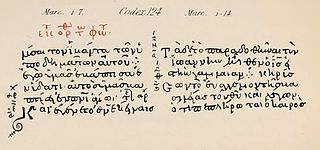 W
WMinuscule 124, ε 1211, is a Greek minuscule manuscript of the New Testament, on 188 thick parchment leaves. Palaeographically it has been assigned to the 11th-century. It has marginalia and liturgical matter. The manuscript is quoted in edition of the Novum Testamentum Graece.
 W
WMinuscule 157, ε 207 (Soden), is a Greek minuscule manuscript of the New Testament Gospels, on vellum. According to the colophon it is dated to the year 1122. Formerly date was wrongly deciphered as 1128?. It has complex contents and full marginalia.
 W
WMinuscule 165, ε 1320 (Soden), is a Greek-Latin minuscule manuscript of the New Testament, on parchment. It is dated by its colophon to the year 1292. It has complex contents. It has marginalia.
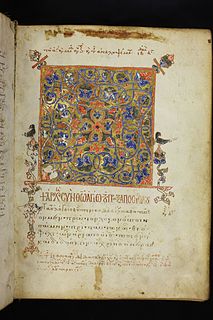 W
WMinuscule 223, α 263, is a Greek minuscule manuscript of the New Testament, on parchment. Palaeographically it has been assigned to the 14th-century. Formerly it was labeled by 223a and 277p. Scrivener labelled it by 220a and 264p.
 W
WMinuscule 314 (in the Gregory-Aland numbering), O11 (Soden), is a Greek minuscule manuscript of the New Testament, on parchment. Palaeographically it has been assigned to the 11th century. Formerly it was labelled by 23a, 28p, and 6r.
 W
WMinuscule 319, α 256 (Soden), is a Greek minuscule manuscript of the New Testament, on parchment. Palaeographically it has been assigned to the 12th century. Formerly it was labelled by 24a and 29p.
 W
WMinuscule 321, α 254 (Soden), is a Greek minuscule manuscript of the New Testament, on parchment. Palaeographically it has been assigned to the 12th century. Formerly it was designated by 26a and 32p. It has marginalia.
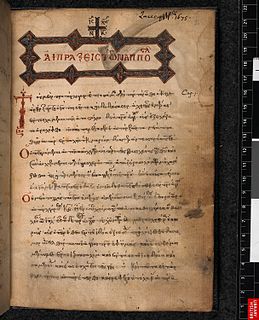 W
WMinuscule 322, α 550 (Soden), is a Greek minuscule manuscript of the New Testament, on paper. Palaeographically it has been assigned to the 15th century. Formerly it was labelled by 27a and 33p.
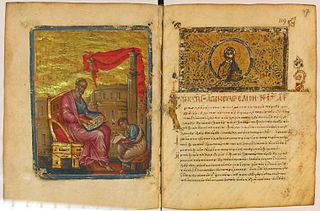 W
WMinuscule 330, δ 259 (Soden), is a Greek minuscule manuscript of the New Testament, on parchment. Palaeographically it has been assigned to the 12th century. It has marginalia. The Greek text of the codex is a representative of the Byzantine text-type.
 W
WMinuscule 333, Nμ230 and Nι230 (Soden), is a Greek minuscule manuscript of the New Testament, on cotton paper. It is dated by a colophon to the year 1214.
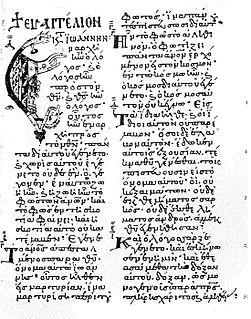 W
WMinuscule 348, ε 227 (Soden), is a Greek minuscule manuscript of the New Testament, on parchment. Dated by a colophon to the year 1022 . It has full marginalia.
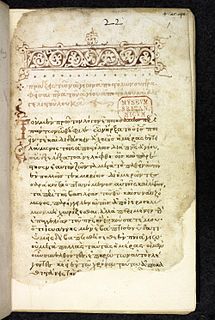 W
WMinuscule 385, α 506 (Soden), is a Greek minuscule manuscript of the New Testament, on paper. Dated by a colophon to the year 1407 (May). The manuscript has no complex context. Formerly it was designated by 60a, 63p, and 29r.
 W
WMinuscule 427, Θε305, is a Greek minuscule manuscript of the New Testament on parchment. Palaeographically, it has been assigned to the 13th century. It has marginalia.
 W
WMinuscule 444, δ 551, is a Greek minuscule manuscript of the New Testament, on parchment. Palaeographically it has been assigned to the 15th century.
 W
WMinuscule 446, ε 507, is a Greek minuscule manuscript of the New Testament, on parchment. Palaeographically it has been assigned to the 15th century. The text represents the Byzantine textual tradition. The manuscript was prepared for liturgical use.
 W
WMinuscule 447, ε 507, is a Greek minuscule manuscript of the New Testament, on parchment. Palaeographically it has been assigned to the 15th century.
 W
WMinuscule 448, ε 509, is a Greek minuscule manuscript of the New Testament, on parchment. It is dated by a colophon to the year 1478. It has marginalia.
 W
WMinuscule 454, Ο 8, is a Greek minuscule manuscript of the New Testament, on parchment. Palaeographically it has been assigned to the 10th century. Formerly it was labeled by 84a and 94p.
 W
WMinuscule 455, ΟΘ 41, is a Greek minuscule manuscript of the New Testament, on paper. Palaeographically it has been assigned to the 13th or 14th century. Formerly it was labelled by 85a and 95p.
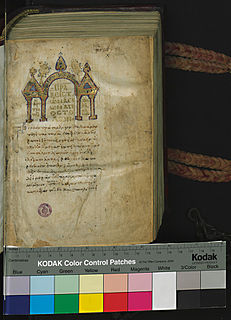 W
WMinuscule 456, α 52, is a Greek minuscule manuscript of the New Testament, on parchment. Palaeographically it has been assigned to the 10th century. Formerly it was labelled by 86a, 96p, and 75r. Marginalia are incomplete. The manuscript was prepared for liturgical use.
 W
WMinuscule 457, α 67, is a Greek minuscule manuscript of the New Testament, on parchment. Palaeographically it has been assigned to the 10th century. The manuscript has complex contents. Formerly it was labeled by 87a and 97p.
 W
WMinuscule 458, α 160, is a Greek minuscule manuscript of the New Testament, on parchment. Palaeographically it has been assigned to the 11th century. Formerly it was labeled by 88a and 98p.
 W
WMinuscule 459, α 104, is a Greek minuscule manuscript of the New Testament, on parchment. It is dated by a colophon to the year 1092. Formerly it was labeled by 89a and 99p.
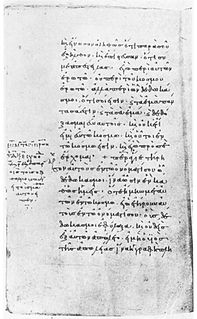 W
WThe Uspenski Gospels, Minuscule 461, ε 92 (Soden), are a New Testament minuscule manuscript written in Greek, dated at 835 AD, and now in St Petersburg in Russia. They are the oldest known dated manuscript of the New Testament; it was not customary for Greek scribes to date their work at the time.
 W
WMinuscule 476, ε 1126, is a Greek minuscule manuscript of the New Testament, on parchment. Palaeographically it has been assigned to the 11th century. The manuscript was adapted for liturgical use. It has liturgical books and full marginalia. Scrivener labelled it by number 566. The codex is in the British Library as MS Arundel 524.
 W
WMinuscule 480, δ 462, is a Greek minuscule manuscript of the New Testament, on parchment. It is dated by a colophon to the year 1366. The manuscript is lacunose. The manuscript was adapted for liturgical use. It has marginalia. It contains liturgical books with hagiographies: Synaxarion and Menologion.
 W
WMinuscule 481, ε 1017, is a Greek minuscule manuscript of the New Testament, on parchment. Palaeographically it has been assigned to the 10th-century. Scrivener labeled it by number 569. The manuscript has complex contents.
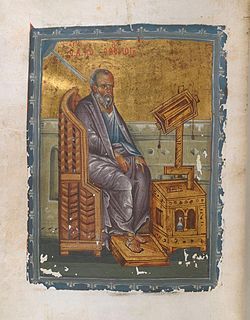 W
WMinuscule 482, ε 1017, is a Greek minuscule manuscript of the New Testament, on parchment. It is dated by a colophon to the year 1285. Scrivener labelled it by number 570. The manuscript has complex context, but faded in parts. The text exhibits more numerous and bolder textual variants than usual manuscripts of the four Gospels. Marginal apparatus is given fully.
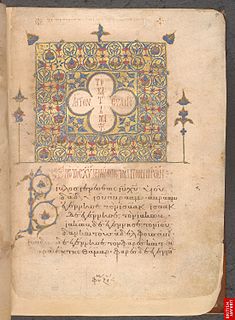 W
WMinuscule 484, ε 322, is a Greek minuscule manuscript of the New Testament, on thick cotton paper. It is dated by a Colophon to the year 1291/1292.
 W
WMinuscule 485, ε 247, is a Greek minuscule manuscript of the New Testament, on parchment. Palaeographically it has been assigned to the 12th-century. Scrivener labeled it by number 572. The manuscript is lacunose. It contains liturgical books: Synaxarion and Menologion.